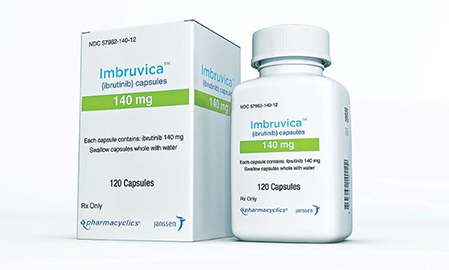AbbVie’s efforts to break its dependence on its blockbuster drug Humira rocketed forward with the Wednesday-night announcement that it was scooping up Pharmacyclics for $21 billion. The company said it expects the acquisition to begin enhancing its balance sheet as of 2017. The balance-sheet information provides some critical relief because it will occur one year after the patent lapses for Humira, which accounted for 63% of AbbVie’s total revenue in 2014.
The deal also means AbbVie will now have Pharmacyclics’s share of the cancer drug Imbruvica, which is co-marketed by Pharmacyclics and Johnson & Johnson. The drug has been racking up indications since its 2013 approval for mantle cell lymphoma and has since grown to include chronic lymphocytic leukemia (CLL), CLL with 17p deletion and the Waldenstrom macroglobulinemia indication, which it pocketed earlier this year.
AbbVie projected that Imbruvica’s sales could reach a peak of $7 billion in 2020, but Goldman Sachs’s Jami Rubin and others have noted that there is a little more (or less) to this number. Under that projection, Pharmacyclics would garner $4.3 billion, but the rest of the revenue would go to partner Johnson & Johnson.
Imbruvica also comes with a patent-protected halo that will last until around 2026, which added to the deal’s appeal and urgency. Pharmacyclics “was one of the few available companies with a large and young enough product in Imbruvica to meet the needs of AbbVie,” Jefferies analyst Jeffrey Holford said in a Thursday research note.
Although Imbruvica is limited to blood cancers, AbbVie noted in an investor presentation that the drug is also being tested for use in diffuse large B-cell lymphoma and follicular lymphoma.
The acquisition has the potential to pay off for AbbVie beyond looking at Imbruvica as a stand-alone asset. AbbVie told investors that it looks as though its experimental leukemia drug, venetoclax, and Imbruvica may work as companion medications for treating cancers including mantle cell lymphoma and chronic lymphocytic leukemia.








